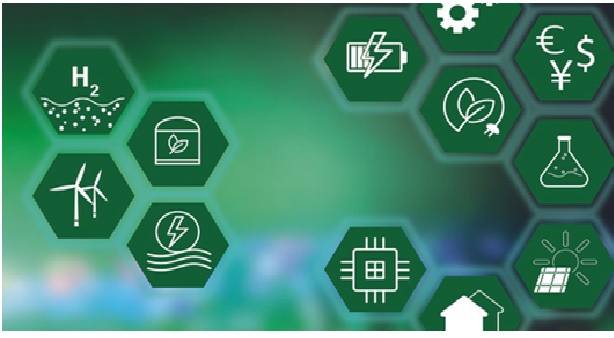Nanocrystals based “Soft Chemical” Energy in Hydrogen
A group from the HZB, Technical University of Berlin and the Freie Universität Berlin as part of the CatLabhas now found a “soft chemical” way to produce an efficient catalyst based on nickel-silicon intermetallic nanocrystals.Electrical energy from wind or sun can be stored as chemical energy in hydrogen, an excellent fuel and energy carrier.

Figure 1: A “soft chemical” way to produce an efficient catalyst.
Figure 1 shows thatthe oxygen evolution reaction at the anode, nanostructured nickel silicide now promises a significant increase in efficiency. This was demonstrated by a group from the HZB, Technical University of Berlin and the Freie Universität Berlin as part of the CatLab research platform with measurements among others at BESSY II. [1]
To speed up the oxygen evolution response on the anode, nickel-based supplies are thought of pretty much as good candidates. Nickel is proof against corrosion, hardly poisonous and in addition cheap. Till now, nevertheless, energy-intensive high-temperature processes have been principally used to supply nickel-based catalyst supplies.
“We mixed the component nickel with silicon, the second most ample component within the Earth’s crust, and achieved nano structuring through a chemical response. The ensuing materials has glorious catalytic properties,” says Menezes.
The crystalline Ni2Si served as a precatalytic for the alkaline oxygen evolution response on the anode and undergoes floor transformation to kind nicke(oxy)hydroxide as an energetic catalyst beneath working situation. [2]
Remarkably, the water electrolysis was further paired with value added organic oxidation reaction in which electrosynthesis of industrially valuable nitrile compounds were produced from primary amines with selective and full conversion under mild conditions.
Such electro synthetic methods can boost up the hydrogen generation at the cathode and can simultaneously provide access to valuable industrial products at the anode.
Compared to modern catalysts based on Nickel, Cobalt, Iron, Ruthenium and Iridium, the nano porous Ni2Si is significantly more active and remains stable for longer reaction time at industrial-level conditions.
To understand the behaviour of Ni2Si in more detail, the team combined different measurement methods, including elemental analyses, electron microscopy and modern spectroscopic measurements at BESSY II. "In the future, even industrial alkaline water electrolysers could be equipped with a coating of this nano porous nickel silicide," says Menezes. [3]
References:
- https://www.technologynetworks.com/applied-sciences/news/nanostructured-nickel-silicide-shows-promise-for-green-hydrogen-364667
- https://newssudden.com/nanostructured-nickel-silicide-exhibits-promise-for-inexperienced-hydrogen/
- https://sciencesources.eurekalert.org/news-releases/961569
Cite this article:
Sri Vasagi K (2022), Nanocrystals based “Soft Chemical” Energy in Hydrogen, Anatechmaz, pp. 386

